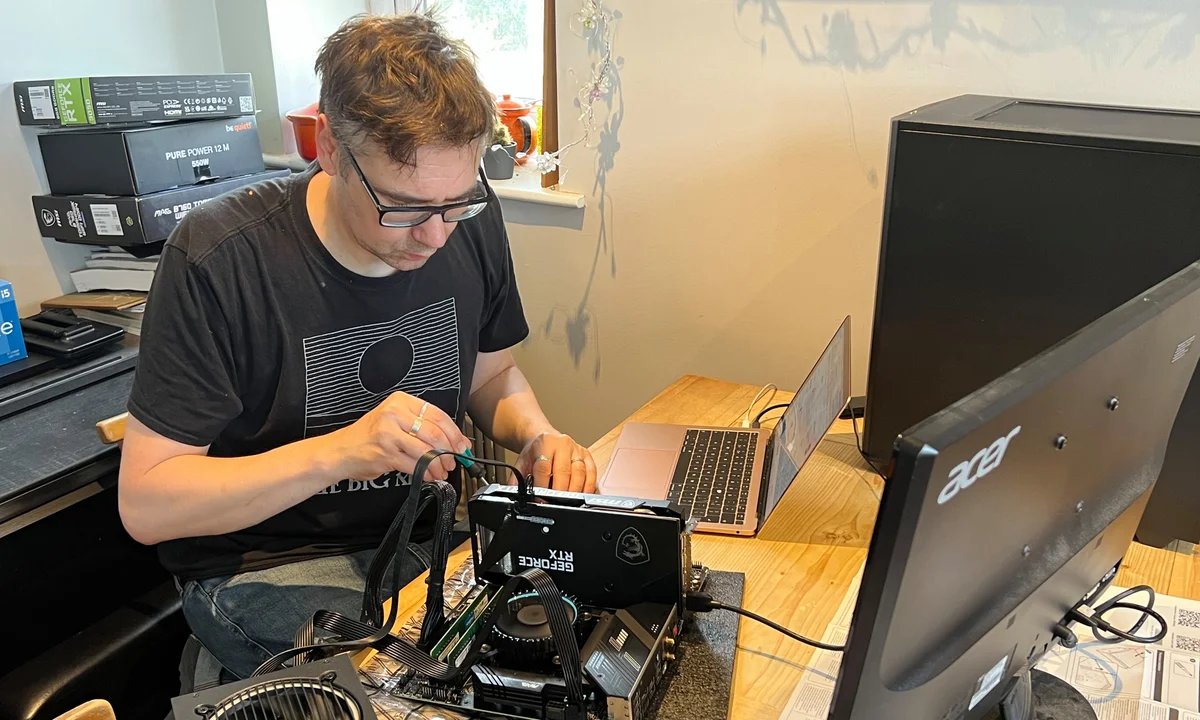
Creating the ideal gaming PC is a journey defined not by brand loyalty or flashy aesthetics, but by thoughtful balance, technical harmony, and a deep understanding of performance needs. This blog explores the art and logic behind assembling a machine capable of handling any genre, any title, and any future challenge — not merely as a tool, but as a seamless extension of the player's vision.
Building a gaming PC today is more than a technical exercise. It’s a creative process rooted in intention. Every choice — from the heart of the processor to the pulse of the cooling system — reflects a philosophy of performance and flexibility. A dream PC is not defined by extravagance or excess, but by precision. It balances power and efficiency, form and function, silence and speed.
At its core, the ideal gaming build starts with purpose. What defines “any game”? It may be a story-rich adventure with expansive landscapes and reactive lighting, or a competitive arena where split-second timing and consistent frame delivery are non-negotiable. It could be simulation, strategy, open-world exploration, or procedural survival. Each genre poses distinct challenges, yet a well-balanced system can navigate them all — not through overkill, but through thoughtful architecture.
Central to this architecture is the choice of processing power. A strong central unit serves as the mind of the machine, orchestrating AI calculations, physics interactions, and background processes. But raw power alone does not suffice; efficiency, temperature control, and scalability define the long-term potential of a build. A dream PC is not only fast today, but adaptable tomorrow — ready to handle new engines, updates, and design paradigms that push the boundaries of digital worlds.
Paired with the central brain is the graphical core — the soul of any gaming rig. It translates data into emotion, wireframes into wonder. It paints the sky, renders the flicker of firelight, and animates entire worlds in motion. The right visual engine achieves not just clarity, but expression. Frame rates become fluid, shadows acquire subtle depth, reflections respond in real-time. This is where immersion begins — not through spectacle, but through detail.
But power without stability is chaos. Thermal management is often overlooked, yet it defines whether a build can maintain its peak potential over time. A dream PC is quiet under pressure, cool under load. Airflow design, acoustic insulation, and intelligent fan control systems work together to ensure that performance is not compromised by heat or noise. The hum of balanced cooling is a background rhythm — never intrusive, always present.
Memory and storage are the veins and arteries of the system. Memory determines how swiftly the machine can think on its feet — loading assets, multitasking, and managing data flow. Storage defines speed and reliability: the difference between a seamless transition and a stuttering load screen. With vast game worlds and high-definition textures becoming the norm, a dream PC must manage data not only rapidly, but intelligently.
Power delivery, often ignored by casual builders, is another cornerstone. Clean, efficient energy distribution ensures that each component performs at its intended potential. Surges are neutralized, fluctuations stabilized, longevity preserved. A system is only as strong as its foundation, and the flow of energy is that invisible backbone.

Aesthetics, while not central, offer subtle psychological effects. The visual design of the case, the arrangement of cables, the choice of lighting — these are the brushstrokes of self-expression. A dream PC does not need to shout; it can whisper elegance through symmetry, simplicity, and clean geometry. It occupies space not as a distraction, but as an integrated part of the gaming environment.
Peripherals and displays complete the experience. Input devices translate human intention into digital reaction. Displays, whether wide or curved, ultra-sharp or high-refresh, become the window through which worlds are perceived. Though this blog focuses on the core system, the understanding of how peripheral choices complement internal architecture is deeply woven into the overall build philosophy.
Future-proofing plays a silent but essential role. The best gaming PCs are not rigid monuments, but modular frameworks. They leave room for growth, welcoming the unknown with open slots and accessible pathways. Firmware updates, component swaps, memory expansions — all become part of a living system. In this way, a dream PC is never truly finished, but always ready.
The process of building such a machine invites patience and understanding. Each part must be compatible not just in socket or speed, but in synergy. The reward is a PC that doesn't struggle or strain, but glides — a system where player and game disappear into each other, where the boundary between command and response dissolves.
In this blog, the approach is not prescriptive but philosophical. It’s not about purchasing power or market trends. It’s about designing an ecosystem, crafting a machine that reflects how one interacts with games, technology, and time. The ultimate gaming PC for any game is not the most expensive or the most extreme. It’s the most balanced, the most coherent, the most tuned to the purpose of play.
And in that balance, the dream becomes reality — not as a product, but as a presence. A silent companion to every journey, every decision, every frame. A machine that fades into the background as the digital world comes alive.

Crafting in survival games feels so rewarding. It's amazing how creative you can get with limited resources.